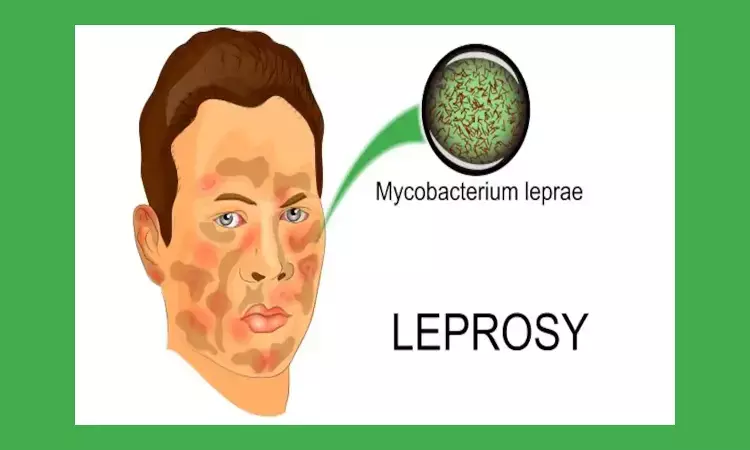- Home
- Medical news & Guidelines
- Anesthesiology
- Cardiology and CTVS
- Critical Care
- Dentistry
- Dermatology
- Diabetes and Endocrinology
- ENT
- Gastroenterology
- Medicine
- Nephrology
- Neurology
- Obstretics-Gynaecology
- Oncology
- Ophthalmology
- Orthopaedics
- Pediatrics-Neonatology
- Psychiatry
- Pulmonology
- Radiology
- Surgery
- Urology
- Laboratory Medicine
- Diet
- Nursing
- Paramedical
- Physiotherapy
- Health news
- Fact Check
- Bone Health Fact Check
- Brain Health Fact Check
- Cancer Related Fact Check
- Child Care Fact Check
- Dental and oral health fact check
- Diabetes and metabolic health fact check
- Diet and Nutrition Fact Check
- Eye and ENT Care Fact Check
- Fitness fact check
- Gut health fact check
- Heart health fact check
- Kidney health fact check
- Medical education fact check
- Men's health fact check
- Respiratory fact check
- Skin and hair care fact check
- Vaccine and Immunization fact check
- Women's health fact check
- AYUSH
- State News
- Andaman and Nicobar Islands
- Andhra Pradesh
- Arunachal Pradesh
- Assam
- Bihar
- Chandigarh
- Chattisgarh
- Dadra and Nagar Haveli
- Daman and Diu
- Delhi
- Goa
- Gujarat
- Haryana
- Himachal Pradesh
- Jammu & Kashmir
- Jharkhand
- Karnataka
- Kerala
- Ladakh
- Lakshadweep
- Madhya Pradesh
- Maharashtra
- Manipur
- Meghalaya
- Mizoram
- Nagaland
- Odisha
- Puducherry
- Punjab
- Rajasthan
- Sikkim
- Tamil Nadu
- Telangana
- Tripura
- Uttar Pradesh
- Uttrakhand
- West Bengal
- Medical Education
- Industry
What is the role of Nerve Conduction Studies in Hansen's Disease?

Leprosy is one of the most significant infectious neuropathies, widespread in 91 countries, with India carrying 50% of the global leprosy burden. The bacterium, M. Leprae, targets the cold areas of sensory nerve and skin, beginning with distal nerve endings, then progressively involving dermal cutaneous sensory and mixed nerves. Its propensity for these areas often results in a diagnostic clinical picture.
In lepromatous leprosy, the bacteria multiply within macrophages and Schwann cells, leading to inflammation and increased bacterial load in the epineurium and endoneurium. The involvement of intradermal nerves may result in asymptomatic cases or distinct clinical manifestations, ranging from an anesthetic skin patch to acute neuropathy in lepra reactions.
Recently, a study by Chaudhary et al. was published in Neurology India, which explored the role of Nerve Conduction Studies (NCS) in diagnosing, documenting, and prognosticating leprosy. The study found sensory NCS abnormalities in 46 (43.6%) and motor NCS abnormalities in 38 (32.2%) nerves, resembling mono-neuritis multiplex due to axonal changes. Though these abnormalities corresponded with respective sensory or motor impairments, they failed to predict disability or outcome.
In cases where the clinical diagnosis was suggested by thickened nerves and maculo-anesthetic patches, the NCS results did not always align with clinical findings. For instance, 11 patients had thickened nerves, but their NCS results were normal. This discrepancy can be attributed to the limitation of NCS in evaluating small nerves, small-diameter, and unmyelinated nerve fibres.
In lepra reactions, notable nerve conduction abnormalities were observed due to increased immune activity and nerve damage from cytokine release. Patients with these reactions exhibited nerve conduction abnormalities across multiple nerves. Despite this, data on Nerve Conduction Velocity (NCV) studies during lepra reactions remain sparse.
Notably, leprosy may result in painful neuropathy. However, NCS are unlikely to detect abnormalities in these cases, as pain signals are conducted by small-diameter fibres, which are not evaluated by standard NCS. This limitation is exemplified in a patient case with a nerve abscess in the peroneal nerve, despite receiving Multi-Drug Therapy (MDT) for a year. This case underscores the importance of regular monitoring using NCS and ultrasonography.
Though NCS correlated with respective sensory or motor abnormalities, there was no significant association with the World Health Organization (WHO) disability grade or the disease outcome. Disabilities affecting daily living may not significantly alter NCS, but they can severely impact the patient's quality of life.
In conclusion, the study underscores the importance of NCS in objectively documenting nerve involvement in leprosy and confirming the nature of nerve involvement (axonal or demyelinating multiplex mononeuritis). However, NCS were not found to be indicative of disability grade or disease outcome. The early diagnosis and prompt treatment of leprosy remain critical in minimising nerve damage and mitigating disease progression.
Reference
Role of Nerve Conduction Studies in Hansen's Disease
Sarvesh K Chaudhary, Jayantee Kalita, Usha K Misra
Neurology India, Vol. 71, No. 3, May-June 2023, pp. 458-462
DOI: 10.4103/0028-3886.378653
MBBS, DrNB Neurosurgery
Krishna Shah, MBBS, DrNB Neurosurgery. She did her MBBS from GMC, Jamnagar, and there after did direct 6 Year DrNB Neurosurgery from Sir Ganga Ram Hospital, Delhi. Her interests lie in Brain and Spine surgery, Neurological disorders, minimally invasive surgeries, Endoscopic brain and spine procedures, as well as research.
Dr Kamal Kant Kohli-MBBS, DTCD- a chest specialist with more than 30 years of practice and a flair for writing clinical articles, Dr Kamal Kant Kohli joined Medical Dialogues as a Chief Editor of Medical News. Besides writing articles, as an editor, he proofreads and verifies all the medical content published on Medical Dialogues including those coming from journals, studies,medical conferences,guidelines etc. Email: drkohli@medicaldialogues.in. Contact no. 011-43720751


